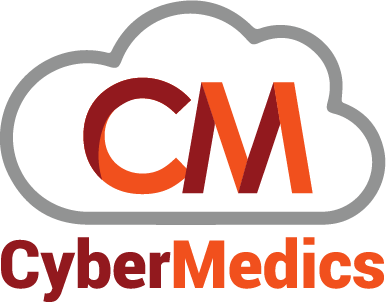
Value Stream Mapping in Software Development (Full Guide)
Tired of your software development taking longer than a Game of Thrones season?
Do you feel like you’re stuck in a perpetual cycle of debugging and testing, with no end in sight?
Well, fear not, because there’s a tool that can help you break free from the cycle of software development doom. That tool is value stream mapping, and it’s not just for manufacturing processes anymore. In fact, value stream mapping can be a software developer’s secret weapon in the quest for faster, better, and more efficient development.
So put down that energy drink, step away from the code, and let’s explore how value stream mapping can help you slay your software development dragons.
What is value stream mapping in software development?
Value stream mapping (VSM) is a tool that can help software developers optimize their processes and improve efficiency. Here’s what you need to know:
VSM is a way to visualize and optimize the flow of work in a software development process. Not enough product development planning is a leading cause for why software projects fail.
It involves mapping out the current state of the process, analyzing it for areas of waste and inefficiency, and designing the ideal future state map
Benefits of VSM in software development include faster development, improved quality, reduced costs, and increased customer satisfaction
When you use VSM in software development, it can help you identify and remove waste, reduce bottlenecks, and create a more efficient process. It also gives you the opportunity to automate your process and make more efficient use of resources.
Why value stream mapping is so important for teams
Want to deliver better software to your users in less time? By identifying and eliminating waste in your development process, you can speed up development and get your software into the hands of your users faster. That’s more high-fives for you and fewer frustrated emails from users.
Tired of dealing with bugs and other issues in your software? VSM identifies areas where errors and defects are likely to occur, so you can proactively address them and improve the quality of your software. That means fewer late nights at the office and more time to binge-watch your favorite show.
Need to promote better teamwork and communication on your development team? By involving the whole team in the VSM process, you can foster collaboration, knowledge sharing, and a stronger team dynamic. It’s like a trust fall, but without the risk of injury.
Example case study
And if you need more convincing, just take a look at some of the successful examples of VSM in software development. For instance, we analyzed Hayward’s legacy approval tracking system by mapping the processes, interviewing the users, and identifying waste (very manual, not integration-friendly, and expensive licensing). Then, we interviewed the users to identify what processes and features an ideal system would include.
From there, we worked closely with the Hayward team to fine-tune the details of the new system following ITIL guidelines. Because we had a productive VSM session, we knew what to fix in a step-by-step sequence and developed a new system that resulted in fewer rejections from incorrect approvers and a quicker approval turnaround time altogether with a real-time notification system.
Step 1: Define the value stream
The first step in any VSM process is to define the value stream—the sequence of tasks that a software goes through from idea to completion. For example, your value stream could include capturing requirements, analysis and design, coding, testing and debugging, deployment, and maintenance.
Identify the scope of the value stream you want to map, such as a specific software development process or project.
Determine the boundaries of the value stream, such as the starting and ending points and the process inputs and outputs.
For instance, when CyberMedics worked with Collins Aerospace for a better materials management system, our scope was, you guessed it, the materials management process. We started with the process inputs (e.g. inventory, customer demand, etc.) and ended with the output (e.g. material quantities, expiration dates, and their locations).
The goal is to get a clear picture of the value stream so you can identify areas of waste and inefficiency.
Step 2: Map the current state
To begin the mapping process, you’ll need to collect data from your current system. This could include collecting information about customer demand, inventory levels, lead times, approvals, etc. You’ll also need to interview stakeholders, observe existing processes, and gather other data.
Map the current state of the value stream by observing and documenting the process flow, from start to finish.
Use symbols and icons to represent different process steps and activities, such as design, development, testing, and deployment.
Include metrics such as cycle time, lead time, and wait time to measure the efficiency and effectiveness of the process.
Example: You create a current state map that shows the software deployment process for your team, including the steps of preparing the environment, building the software, testing the software, deploying the software, and verifying successful deployment. You use symbols and icons to represent each step, and include metrics such as the time it takes to complete each step.
Step 3: Identify potential improvements
Now that you have a clear picture of your value stream, it’s time to identify potential opportunities for improvement.
Look for bottlenecks: Where are things getting stuck or causing delays? Maybe there’s a process step that takes longer than it needs to or a resource constraint that’s causing issues. A smart way to find out is to talk to stakeholders and ask them what they think can be improved.
Identify handoffs: Who’s responsible for what in the process? Are there points where communication or coordination could be improved to speed things up?
Find waste: Are there any parts of the process that don’t add value? Maybe you’re doing unnecessary work or producing more than you need to. Use tools like the 5 Whys and root cause analysis to identify the underlying causes of waste.
Related: 7 Deadly Wastes of Lean Software Development (+ The Fixes)
Measure cycle time: How long does it take to get from one end of the process to the other? This can help you pinpoint areas that need improvement, like streamlining a particular step or using technology to speed things up.
Measure lead time: How long does it take to deliver the final product to the customer? This is a key metric to keep in mind, as it can help you focus on delivering value to the end user.
Step 4: Design the future state map
Once you’ve identified potential improvements, it’s time to create a future state map. This is the blueprint for your improved value stream and should include the changes you identified in the previous step.
For each process step, determine how much waste can be eliminated and how much efficiency can be gained.
Specify who will do what tasks and who will oversee the entire process.
Include metrics such as cycle time and lead time to measure the performance of the improved value stream.
Use symbols and icons to represent the optimized process flow, with changes such as process reengineering, automation, and process simplification.
Example: You create a future state map for your software deployment process that eliminates waste, speeds up steps like testing and deployment, and reduces overall lead time from 4 days to 2 days. The map specifies who will be responsible for each step, and includes metrics such as cycle time and lead time to measure the performance of the improved process.
Step 5: Implement and monitor
Now that you have a plan for improving your value stream, it’s time to put it into action. Start by implementing the changes in small chunks, so you can test them to see how they affect the process.
Communicate the changes to all stakeholders, so everyone is on board and understands what needs to happen.
Iterate and refine based on feedback from the team.
Monitor performance metrics such as cycle time, lead time, and wait time over time to ensure that you’re making progress towards your goals.
Make any necessary adjustments to the process to ensure that it runs smoothly and efficiently.
Make things easier with value stream mapping software
Value stream mapping software can make it easier to visualize, analyze, and optimize your value stream. It includes features such as flowcharts and customizable metrics that help you quickly create a map and identify potential improvement opportunities.
Here are some popular value stream mapping tools:
Lucidchart is a popular web-based platform that lets you create all sorts of diagrams, charts, and vector-based illustrations. You’ll find templates for nearly every field, including flowcharts, ER diagrams, wireframes, and value stream maps. One of the best features is the ability to collaborate with your team, even if they’re in different parts of the world. Lucidchart also offers SSO authentication, Microsoft Visio integration, and doesn’t require any software installation. Keep in mind, though, that some advanced features and shapes require a paid subscription.
SmartDraw is a comprehensive diagramming tool that can double up as a VSM software, no matter what your job entails. You can access it either online or through a desktop version that requires installation. With SmartDraw, you can enjoy automatic object alignment and spacing and access to pre-built templates that save you time. The app also offers a perpetual license, meaning you don’t have to worry about monthly or annual subscription fees. Additionally, you can integrate it with other tools like MS Office and Visio for greater efficiency. However, there are limited signup options available.
Creately is an online diagramming tool that is great for real-time team collaboration. With over 1000 templates to start with and the ability to add comments and create threaded discussions, working with remote team members is made much easier. Plus, the basic plan is free, and projects can be exported in your preferred format. Integrating with other cloud platforms like Google Drive and OneDrive is currently in development. However, the desktop variant may be costly for teams with multiple users.
Let’s revamp your outdated processes together
All in all, value stream mapping is an essential step for improving the efficiency of your process. It’s a great way to identify waste and bottlenecks, as well as opportunities for improvement. And with with value stream mapping software like Lucidchart, SmartDraw, or Creately, you can create customized maps that accurately represent the optimized process flow, with changes such as process reengineering, automation, and process simplification.
If you’re stuck on how to get started, contact us and let’s revamp your outdated processes together. We can help your team identify and eliminate waste, reduce lead times, and deliver better software to your customers.
Good luck! 🚀 🎉 💪
